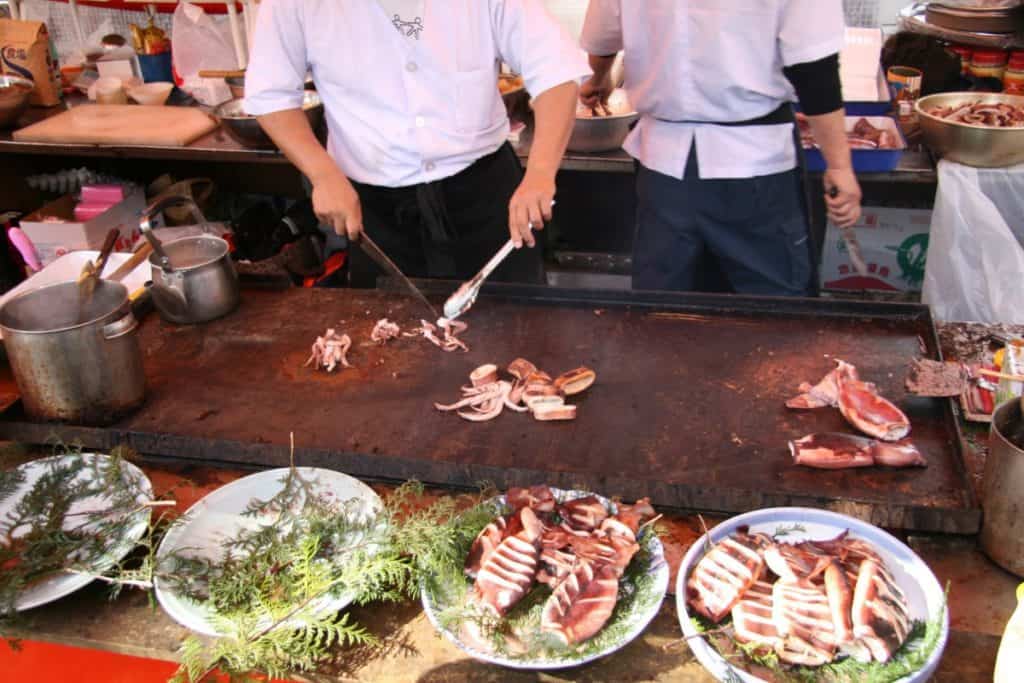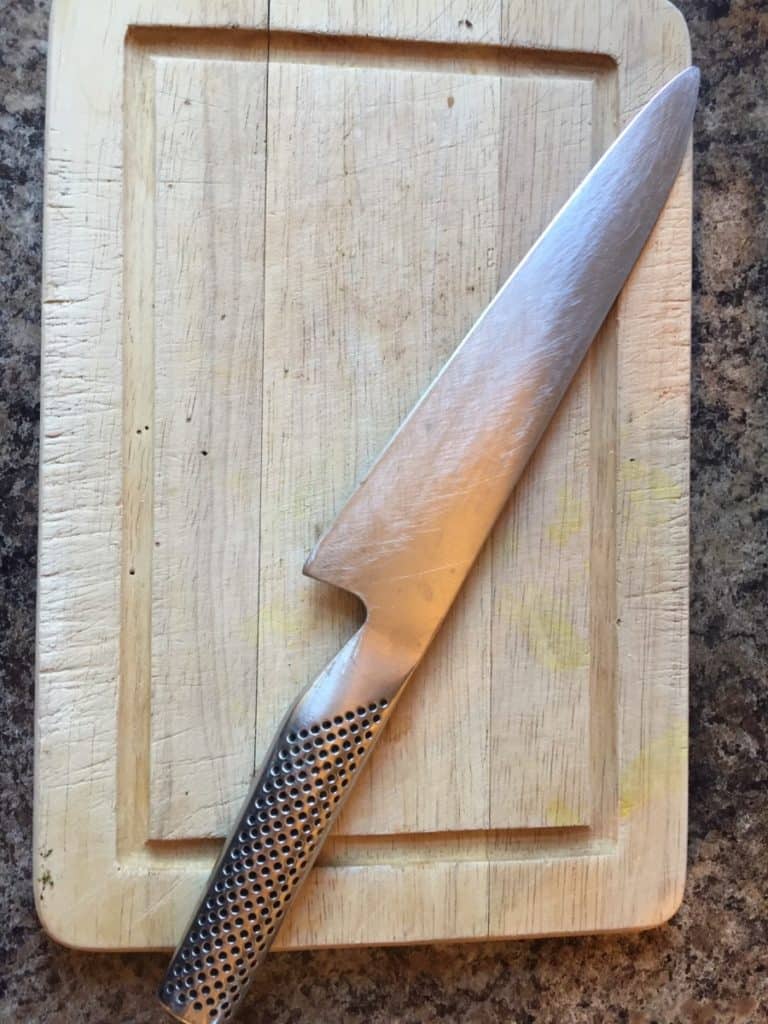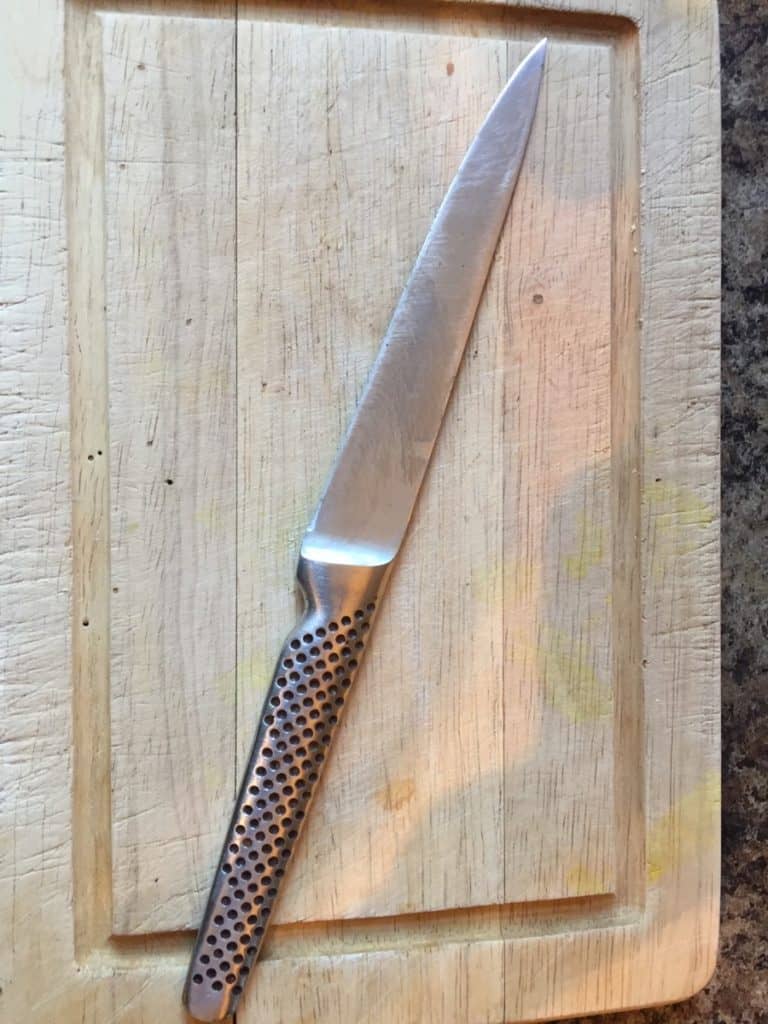
The key to a successful restaurant is how well it’s kitchen is set up to handle the orders that come in during a busy service. This is where the different kitchen sections come into play.
In larger kitchens these can be clearly defined physical sections. In smaller kitchens there needs to be a bit more fluidity in the way the sections operate. What ever the set up, this article will show readers each section of a kitchen and the role each one plays.
A restaurant kitchen is organised by being divided into 6 sections. These sections are Veg, Larder, Fish, Meat, Pastry and the Pass. Each section performs a vital role in the smooth operation and flow of orders during a busy service. Although the sections are different, it is important they work together as a team.
That’s the main sections listed above which I will be covering in this post. There are others, and some people choose to give sections different names (such as grill section, instead of calling it meat section) In my experience these different names all mean a similar thing.
If a professional kitchen sets itself up with the 6 sections listed above it will be able to handle any volume of order flow.
Each section is responsible for its own unique tasks, and has different standards of chef . For example, the veg section is the place where most new commis chefs
. For example, the veg section is the place where most new commis chefs will find themselves working in the beginning!
will find themselves working in the beginning!
I have also listed under each section the one knife that makes life a lot easier when working in that part of a kitchen. Beginners don’t need to run out and buy lots of different knives, just a couple of unique ones will cover 99% of the work that needs to be done.
What Happens On The Veg Section Of A Kitchen?
The veg section of a kitchen is responsible for prepping and serving all the vegetables and side elements that compliment a dish. For example, the veg section may be responsible for the mash potato, risotto, sautéed spinach – anything which does not come from one of the other sections is usually handled to the veg section.
This section typically has to produce a large quantity of food on a daily basis. It can be quite labour intensive despite kitchens having lots of equipment to help. If carrots are on the menu that evening then a large amount will need to be peeled by hand, there is no mechanical aid that can help!
despite kitchens having lots of equipment to help. If carrots are on the menu that evening then a large amount will need to be peeled by hand, there is no mechanical aid that can help!
As another example if risotto is on the menu this will come from the veg section. In this instance a base will be cooked during the day and chilled for use later on. Then during the evening service it can be added too and finished off to order ready to accompany the main part of the dish that it is going with.
If this risotto was being served with salmon, the fish section would liaise with the veg during service to make sure the veg section had the risotto ready on time so as not to spoil the fish.
Staff meals and children’s meals are also typically handled by the veg section and overall it is a very busy section to be on!
The veg section is where most new commis chefs will begin their career. The large quantity of food being produced is an excellent opportunity for beginners to learn the knife skills required.
The veg section suits beginner chefs as the timings are not as crucial as they are on other sections. When cooking veg and side dish elements there is a larger margin of error allowed.
as the timings are not as crucial as they are on other sections. When cooking veg and side dish elements there is a larger margin of error allowed.
- Using our risotto example from earlier; if the risotto is ready 10 minutes before the fish, it can be kept warm without spoiling. However, if the fish is ready 10 minutes too early then chances are it will be ruined by the time it leaves the kitchen!
The other main reason for placing new chefs on this section is that any mistakes are not so financially costly.
For example, If a new chef overcooks the potatoes they will have to throw them away and start again. Not ideal and will certainly not make you one of the Head Chef’s star pupils! However, (although the time penalty is large, having to start all over again) the financial cost is low as potatoes are relatively inexpensive.
Now picture the same inexperienced chef placed on the meat section. They overcook the roast sirloin for that Sunday’s roast dinner. The restaurant cannot serve the overcooked beef, and the financial cost is high as meat is expensive!
The number one knife needed in this section is a standard chefs chopping knife. This is the type of knife you think of when you think of chefs knives. It is the all rounder that can be used to cut and chop pretty much anything. Here is a photo of my knife that I have had since my first day around 15 years ago, and it’s still going strong!

I’ll link to this knife on Amazon Here. I always liked this knife as there is no ridge between the handle and blade, making it harder for food stuffs to get trapped there and therefor easier to clean.
A quick word of warning when it comes to chef knives. There are lots of fakes out there! Take care to buy from reputable dealers with good feedback. Some bargains that are found on other sites (particularly online auction sites) really are too good to be true.
Every new chef experiences this section and is part of earning your stripes. The best method to progress is to keep your head down and do all that is asked of you. That way you will be progressed onto larder section before you know it!
What Happens On The Larder Section Of A Kitchen?
The larder section is responsible for all the cold elements of a dish. Any cold appetisers, side dishes or cheeses will come from this section. The whole room is refrigerated to a lower temperature to help preserve the delicate foods and shield them from the main kitchens heat. There are pros and cons to this step up the kitchen hierarchy ladder.
Larger restaurant and hotel kitchens will be able to have this section as a separate refrigerated section. Other smaller kitchens will have to make do with finding a place as far away from the heat of the stoves as they can.
will be able to have this section as a separate refrigerated section. Other smaller kitchens will have to make do with finding a place as far away from the heat of the stoves as they can.
One of the main advantages of the larder section is that there is more time to present food in imaginative ways. As the dishes are served cold, as soon as the order comes in the chef can start preparing to plate the dish.
For example if a terrine where ordered it would come from this section. As it is cold, and therefor there is nothing to cook, the timings become less important. It would be rare to have a situation in a kitchen where a warm dish is being held up waiting for a cold dish to be ready.
As soon as the cold dish order comes in the chef can begin to plate it. Safe in the knowledge it will not spoil in the cool room before it leaves to go to the customer.
This section is seen as a step up the ladder for all new chefs . The high volume work load of the veg section is repleced by a more intricate detailed work of the larder section. Time can be taken learning new skills and learning some great techniques for presenting food in imaginative ways.
. The high volume work load of the veg section is repleced by a more intricate detailed work of the larder section. Time can be taken learning new skills and learning some great techniques for presenting food in imaginative ways.
Whenever the heat of the main kitchen gets to much the larder is a greart place for chefs to find an excuse to pop to and cool off for 5 minutes!
The downside of this section (and why I personally never loved this section) is the fact that you are not a part of the hustle and bustle of the main kitchen. As all the dishes are cold it is rare to be under intense pressure. Instead it can almost appear like playing your part in the service from the side lines.
The one knife needed for here is a bread knife. The chefs knife from the veg section will be perfectly fine for all tasks in here except cutting bread. There is no need to buy an expensive bread knife. I personally always used a Victorinox one which I will link to it on Nisbets here.
Unfortunately for some (and fortunately for others) a chef can’t spend their whole career hiding in the cool of the larder section! The next stage on the career ladder is to move onto the fish section.
What Happens On The Fish Section Of A Kitchen?
Perhaps unsurprisingly the fish section is where all the fish elements of the dishes are prepared and cooked. They are often also responsible for the sauces to accompany all the dishes and can be a very busy section to work on. Most chefs enjoy this section the most for several reasons.
Being placed on fish section is viewed as a privilege because the chef has demonstrated their ability to work well to timings and cook dishes correctly without overcooking them.
Fish is a delicate product and the margin for error when cooking is low. Anyone who has tried to fillet a fish at home will know that it is not as easy as it appears. There is a skill in not leaving fish on the bone whilst also ensuring that the fillet is not ruined in the process.
The fish section can be very busy. The various fish require a lot of prepping during the day and the section can get very intense during service. A good system is required so that the chef knows how many fillets they have on order as well as what should be leaving the kitchen at each point; All the while not over or under cooking each fish.
Sauces also tend to come from this section. Therefor as well as controlling the pace of some dishes where the main element is the fish, they also have to be aware of the timings on other dishes that require the sauces they are responsible for. Not always an easy juggling act!
One big advantage of the fish section, and the reason this is the next step up the ladder as opposed to the meat section, is the fact that a chef can get themselves out of trouble relatively quickly.
For example: If an order for a sea bass fillet is called away, and I as the chef realise I haven’t got a sea bass fillet ready to go, I can call saying it will be ‘3 minutes’ (a bit of artistic licence on the timing) and get a fillet cooking quickly. Using experience and techniques I can get that fillet cooked pretty quickly.
The Head chef won’t be over the moon that I have slightly delayed the table, but it won’t have been so delayed that the whole order needs to be re cooked!
won’t be over the moon that I have slightly delayed the table, but it won’t have been so delayed that the whole order needs to be re cooked!
A long filleting knife is required for the fish section. It has a long flexible blade that helps curve with the fish, making the task of filleting a lot easier. I will link a video here of how to fillet a fish for anyone interested, and my personal favourite Victorinox knife I will link to on Amazon here.
The fish section can get very intense as you are right in the heart of the kitchen. Once a chef has proven themselves on this section they can then step up to the meat section!
on this section they can then step up to the meat section!
What Happens On The Meat Section Of A Kitchen?
The meat section is sometimes referred to as the Grill section. This area is responsible for all the meat elements of the dish and is often seen as the most important section in the kitchen.
The meat section typically controls the timings and dictates the pace of the service. It is seen as the top section in the kitchen hierarchy for a number of reasons.
for a number of reasons.
- Meat is one of the most financially costly products and therefor the Head chef needs to trust the chefs on that section not to make mistakes.
- Another reason it is viewed as a privalage to work on the meat section is the fact that the chefs working there must dictate the pace to the rest of the kitchen.
For example, if an order for a well done steak comes in, the longest element of that dish to cook is the meat. This means the sauce and the veg chefs have to get their timings from the meat chef. When the meat chef gives the 5 minute countdown it’s important the other chefs respond and get everything ready at the same time.
A downside of this section is that mistakes can be difficult to quickly rectify. If an order has been missed then due to the time it takes to cook, the chances are the whole table has to wait a long time for the meat chef to catch up.
For example, if the Head Chef calls ‘away’ on a well done steak and the chef responsible has missed the order come in and doesn’t even have it cooking, that is going to be a very long wait for the customer. Resulting in a very unhappy head chef!
As the meat section is seen as a privilege to work on, a chef cannot make too many mistakes before they are reassigned to a different section.
There is a certain pride to working on this section. Any chefs newly promoted to it tend to walk a bit taller and call their timings out a little louder!
to it tend to walk a bit taller and call their timings out a little louder!
Depending on the level of kitchen, the meat section can involve a lot of butchery work. It’s not uncommon for kitchens to order in whole chickens or cuts of meat for the chefs to portion and de-bone themselves.
This work is interesting and not as labour intensive as other sections (veg section!) an hour or two spent portioning up whole chickens is more enjoyable than the same amount of time spent peeling and chopping potatoes, in my opinion.
By the time a chef reaches the meat section they will have a whole range of knives in their box. Those starting out however, only really need a boning knife to add to the other three they already have so far. I use a great Global knife that is excellent value and a favourite among chefs. Ill link it to Amazon here.
So where next if the meat section is top of the metaphorical cooking ladder?
Many chefs decide to change things up at this point and get some experience with desserts, namely in the Pastry Section.
What Happens In The Pastry Section Of A Kitchen?
Pastry section is the name given to the part of the restaurant kitchen which handles the dessert menu. The chefs in this section are responsible for preparing the desserts, the breads and any cakes or chocolates on offer. The pastry section often operates independently of the main kitchen for a few reasons.
Desserts, breads, cakes and chocolate making are all independent skills in themselves. There is so much to learn in these areas that some chefs choose to spend their whole careers focusing on just this section.
are all independent skills in themselves. There is so much to learn in these areas that some chefs choose to spend their whole careers focusing on just this section.
Many other chefs choose to gain some experience in this section to help them be a better all round chef. However, there is so much to learn in this area its hard to be great at it without devoting a large portion of your career to it.
Larger brigades will have a specific pastry Head Chef who runs the pastry section as its own independent kitchen with a pastry Sous chef, Pastry Chef De Partie etc.
etc.
These chefs would not be expected to ‘fill in’ on the main cooking line as they have chosen to stick with pastry.
The benefit of this section is that as a lot of desserts are cold, the chefs are given a lot more time to plate the dishes and make amazing visual spectacles on the plate. Another reason for the extra time is that not all customers choose to have a dessert so the pastry chefs can end up doing half the amount of covers the main kitchen has done.
I always enjoyed the cool of the pastry kitchen and the chance to experiment with different cooking and plating techniques really helped my all round cooking. However, being the last ones to leave every night gets a little disheartening!
As touched on above, a downside of the pastry section is the fact that you are always last to leave. Some customers have desserts very late and you are unable to clean down and go until they have finished.

A lot of pastry work has to be exact, following and fine tuning recipes. The wrong quantities of ingredients in a dessert could be disastrous. Many chefs prefer to add their own flare to dishes and these restrictions are difficult for some to work within long term.
There’s so many pieces of equipment a pastry chef can use that it would be a whole article in itself. In terms of which knife is required a utility knife comes in handy at this point. This is a photo of the Global knife I still enjoy using today which I’ll link to Amazon here.
The pastry section can be a separate part of the main kitchen, but more often than not it is its own cool room away from the heat of the main kitchen.
Now we’ve taken a detour into the pastry section it’s time to head back to the main kitchen for our final section, which is the stomping ground for the Head Chef!
What Happens On The Kitchen Pass?
The pass is the section at the front of the kitchen where the head chef works. The chef will take the customer’s orders from the waiting staff before calling them out to the kitchen brigade. They will also plate up the food under the hot lamps before sending it out to the customers via the waiting staff. It is a very intense and responsible job for several reasons.
The Head chef is like a conductor of an orchestra. The pass is positioned at the front of the kitchen so they can communicate with the front of house staff, as well control the brigade of chefs
is like a conductor of an orchestra. The pass is positioned at the front of the kitchen so they can communicate with the front of house staff, as well control the brigade of chefs on the cooking sections behind them.
on the cooking sections behind them.
The Head chef is responsible for calling out the orders that come in and letting the chefs know the customer’s are ready for their orders to be served. All dishes pass before the head chef before going out to the customers. this ensures they can have the ultimate quality control on the dishes that leave the kitchen.
Any fans of Hell’s Kitchen will be familiar with the sight of Gordon Ramsey standing at the pass keeping a tight rein on the kitchen from the front!
The head chef must also deal with the various requests that come in from the waiting staff. All other chefs in the kitchen are separated from this communication with the front of house staff. The kitchen staff take their orders from the head chef and don’t tend to concern themselves with any other info.
In smaller kitchens the Head Chef may have to cook as well during service, but anywhere with a reasonable number of chefs (5 for example) the head chef will solely be responsible for plating up and controlling the flow of orders.
It could be viewed as a disappointment for some that once you have climbed the difficult career ladder to become head chef, your actual cooking on a day to day basis becomes less in many kitchens.
A Head Chef will have a whole array of knives by this point. The most important tool a chef will need on the pass is an array of spoons! Spoons are used for everything from tasting to lifting food out of pans.
- Top Tip: Many chefs carry a few dessert spoons around in there back pocket as they are very useful!
To Sum Up
That’s the entire tour around a restaurant kitchen and how each section operates. If trying to set up your own physical kitchen the space available will dictate what is possible. If space is a real premium try and keep the larder and pastry sections separate from the main kitchen as the dishes produced here really benefit from a cooler environment.
Many people may find this other article helpful, as it demonstrates the flow of an order from the time the customer orders to the point they are enjoying their coffees and paying, which I will link here.
